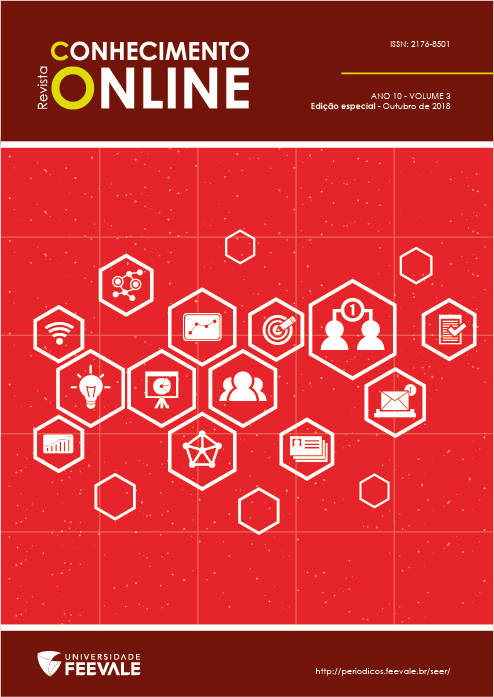AVALIAÇÃO DO POTENCIAL GENOTÓXICO DE CÁDMIO E CHUMBO POR MEIO DO BIOENSAIO COM Tradescantia pallida (Rose) D.R. Hunt var. purpurea Boom
DOI:
https://doi.org/10.25112/rco.v3i0.1602Abstract
O potencial genotóxico dos elementos-traço cádmio (Cd) e chumbo (Pb) nas concentrações máximas permitidas no Brasil pelas Resoluções CONAMA nº 357/2005 (classificação de corpos d’água, água doce de classe I) e CONSEMA nº 355/2017 (emissão de efluentes líquidos em águas superficiais no Rio Grande do Sul) foi avaliado por meio do teste de micronúcleos (MCN) com o uso de Tradescantia pallida var. purpurea. Após 24 h de adaptação em água destilada, 20 ramos com botões florais foram expostos por 8 h em 2 L em água destilada com diferentes concentrações de Cd (0,001 e 0,1 mg L-1) e Pb (0,01 e 0,2 mg L-1), seguido da recuperação por 24 h em água destilada para finalizar o ciclo da meiose. Simultaneamente, foi realizado controle negativo com exposição dos ramos apenas em água destilada. Após, as inflorescências foram fixadas em etanol/ácido acético (3:1 v:v) por 24 h e armazenadas em etanol 70% sob refrigeração. As frequências de MCN nos botões florais expostos às concentrações de 0,001 mg L-1 e 0,1 mg L-1 de Cd não diferiram significativamente entre si (2,90 e 3,43 MCN, respectivamente), mas diferiram significativamente da frequência do controle (1,93 MCN) (p=0,006). Para Pb, as frequências de MCN nos botões florais expostos às concentrações 0,01 mg L-1 e 0,2 mg L-1 diferiram significativamente entre si (3,76 e 5,03 MCN, respectivamente) e do controle (1,93 MCN) (p<0,001). Os resultados indicam que as concentrações máximas de Cd e Pb permitidas pelas Resoluções CONAMA nº 357/2005 e CONSEMA nº 355/2017 são potencialmente genotóxicas.
Palavras-chave: Genotoxicidade. Elemento-traço. Trad-MCN.
ABSTRACT
The genotoxic potential of the trace elements cadmium (Cd) and lead (Pb) at the maximum concentrations allowed by CONAMA nº 357/2005 (classification of watersheds, class 1 freshwater) and CONSEMA nº 355/2017 resolutions (emission of effluents in superficial waters in Rio Grande do Sul) were evaluated using the micronuclei (MCN) test with the use of Tradescantia pallida var. purpurea. After 24 h of adaptation in distilled water, 20 cuttings with floral buds were exposed for 8 h in 2 L in distilled water with different concentrations of Cd (0.001 and 0.1 mg L-1) and Pb (0.01 and 0.2 mg L-1), followed by recovery for 24 h in distilled water to finish the meiosis cycle. Simultaneously, negative control was performed with exposure of the cuttings only in distilled water. After the inflorescences were fixed in ethanol/acetic acid (3:1 v:v) for 24 h and stored in ethanol 70% under refrigeration. MCN frequencies in flower buds exposed to concentrations of 0.001 mg L-1 and 0.1 mg L-1 of Cd did not differ significantly from each other (2.90 and 3.43 MCN, respectively), but differed significantly from the control (1.93) (p=0.006). For Pb, the MCN frequency in flower buds exposed to concentrations of 0.01 mg L-1 and 0.2 mg L-1 differed significantly from each other (3.76 and 5.03, respectively) and from the control (1.93) (p<0.001). The results indicate that the maximum concentrations of Cd and Pb permitted by CONAMA n° 357/2005 and CONSEMA n° 355/2017 resolutions are potentially genotoxic.
Keywords: Genotoxicity. Trace element. Trad-MCN.
Downloads
Published
How to Cite
Issue
Section
License
• Os autores mantêm os direitos autorais e concedem à revista o direito de primeira publicação com o trabalho licenciado sob a Licença Creative Commons - Attribution 4.0 International (CC BY 4.0).
• Os autores são estimulados a publicar e distribuir seu trabalho online (ex.: em repositórios institucionais ou na sua página pessoal), pois isso pode aumentar o impacto e a citação do trabalho publicado.


